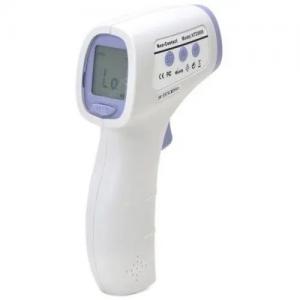
Add to Cart
Product
Thermography is a noninvasive tool that uses an infrared camera to produce images (thermograms) that show the patterns of heat and blood flow on or near the surface of the body. Thermography devices, also known as digital infrared imaging devices, have been cleared for marketing by the FDA only for use with another screening or diagnostic test like mammography, not for use as a standalone diagnostic tool.
Because fever is an indicator of infectious disease, the infrared technology can be used adjunctively in a mass screening process to quickly detect elevated temperatures and identify potentially ill individuals.
Infrared radiation has a longer wavelength and lower frequency compared to the visible light in the electromagnetic spectrum. Infrared thermal camera or thermographic camera has a sixth sense ability to detect the infrared radiation in the form of heat energy from an object which is invisible to human eyes. Thermal images obtained using this technique or often referred to as thermogram and it contains information on temperature and mapped onto the surface of an object in the form of different colour mapping schemes ( i.e rainbow, thermal mode or grayscale ) with respect to its specific temperature range. Thermal camera has been used widely in military and defense due to its capability in detecting any objects at night without any presence of light but heat radiation alone.
In the medical field, the usage of infrared thermography has shown to be a potential non-invasive and non-obstructive tool in assisting medical practitioner to detect and diagnose any illnesses or diseases which causes an increase in body temperature. A low-cost infrared thermometer is widely utilized in clinics, hospitals or even for personal use to simply detect the body temperature with minimal area coverage. Due to its passive nature where there are no harmful rays radiated from the thermal camera, thermography technique has been successfully used in preclinical diagnosis to detect diseases such as breast cancer, diabetic neuropathy and peripheral vascular disorder. In the current research, a lot of studies have explored the possibility of thermography to be used as a contact-less device for detecting extra-cranial vessel disease, breathing monitoring, neonatal physiology monitoring, skin problem and recently, thermography has become a preferred tool in monitoring athletes’ performance.